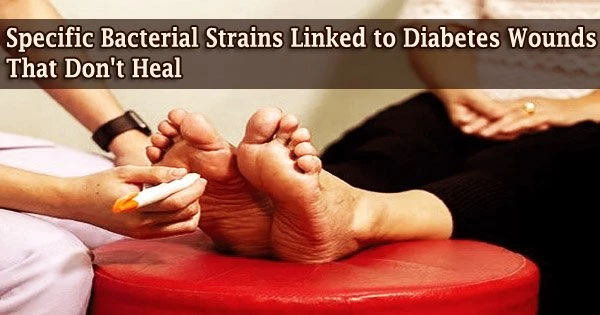The microbiome of a wound, such as a diabetic foot ulcer, may determine whether it heals or advances to a worse result, such as infection or even amputation. Specific strains of the widespread bacterium Staphylococcus aureus (S. aureus), according to a recent study from the Perelman School of Medicine at the University of Pennsylvania, are linked to wounds that do not heal.
Researchers found additional common bacteria in these wounds that may hinder or even promote healing, indicating that keeping an eye on the germs of diabetic foot ulcers may help clinicians determine the most effective ways to treat these wounds. The results were reported today in Cell Host and Microbe.
One-quarter of those with diabetes, who make up around 10% of the population, will experience a wound that doesn’t heal. In the worst case scenario, which happens in up to 25% of these patients who develop wounds, the wounds will need to be amputated.
Due to the deformity of the feet and lack of feeling brought on by diabetes’ high blood glucose levels, many patients who acquire these ulcers may not recognize the early warning signals. Patients with diabetes frequently experience foot ulcers as a result, which may go untreated over time.
Patients may have to endure these wounds for months or even years before they heal due to the inadequate nature of current treatments. When they result in amputation, diabetic foot ulcers have a mortality rate higher than 70%, which is comparable to the combined mortality rates of breast and prostate cancer.
It is possible there are bacteria that actually benefit the wound, and we can use what we learned in this study to develop new treatment strategies for non-healing wounds. We hope this research will eventually help identify patients at risk for bad outcomes and lead to treatment innovations that these patients desperately need.
Elizabeth Grice
“While wounds don’t receive the attention of other diseases, they’re incredibly common, and our study increases our understanding of how microbes impair or promote healing,” said the study’s senior author Elizabeth Grice, PhD, an associate professor of Dermatology.
As a post-doctoral researcher in Grice’s lab, the study’s lead author, Lindsay Kalan, PhD, is currently an assistant professor of medical microbiology and immunology at the University of Wisconsin School of medicine and public health.
The microorganisms that live in chronic wounds have been categorized in earlier research using lower resolution techniques. This study expanded on that research by identifying individual species and subspecies and examining how they relate to patient outcomes using better resolution DNA sequencing.
Every two weeks for six months, or until the wound healed or was amputated, researchers took samples from 46 patient ulcers.
The majority of wounds included S. aureus, a prevalent and challenging to treat bacterium, although researchers highlight that the bacteria’s presence alone did not indicate whether or not a lesion will heal.
High resolution DNA sequencing, however, revealed certain S. aureus strains were only present in the wounds that did not heal over the period of the study. The “non-healing” strain was found to be more capable of causing tissue damage and dodging antibiotic treatments, according to additional testing. Researchers used mice to further validate their results.
They added that Alcaligenes faecalis, another typical bacteria discovered in diabetes lesions, was linked to speedier recovery.
“It is possible there are bacteria that actually benefit the wound, and we can use what we learned in this study to develop new treatment strategies for non-healing wounds,” Grice said. “We hope this research will eventually help identify patients at risk for bad outcomes and lead to treatment innovations that these patients desperately need.”
















